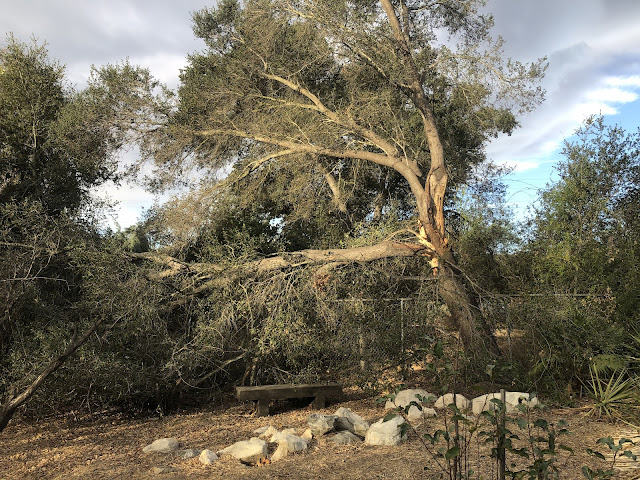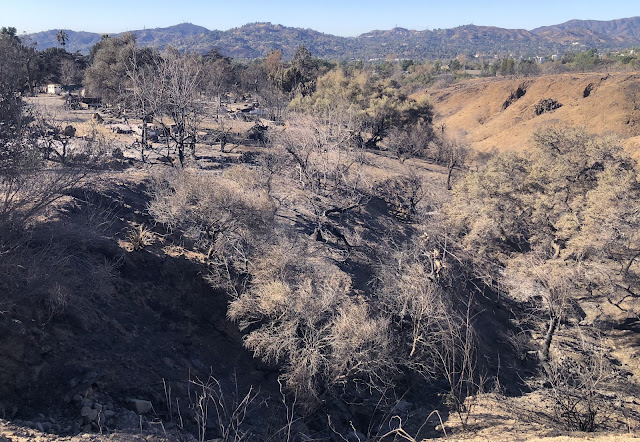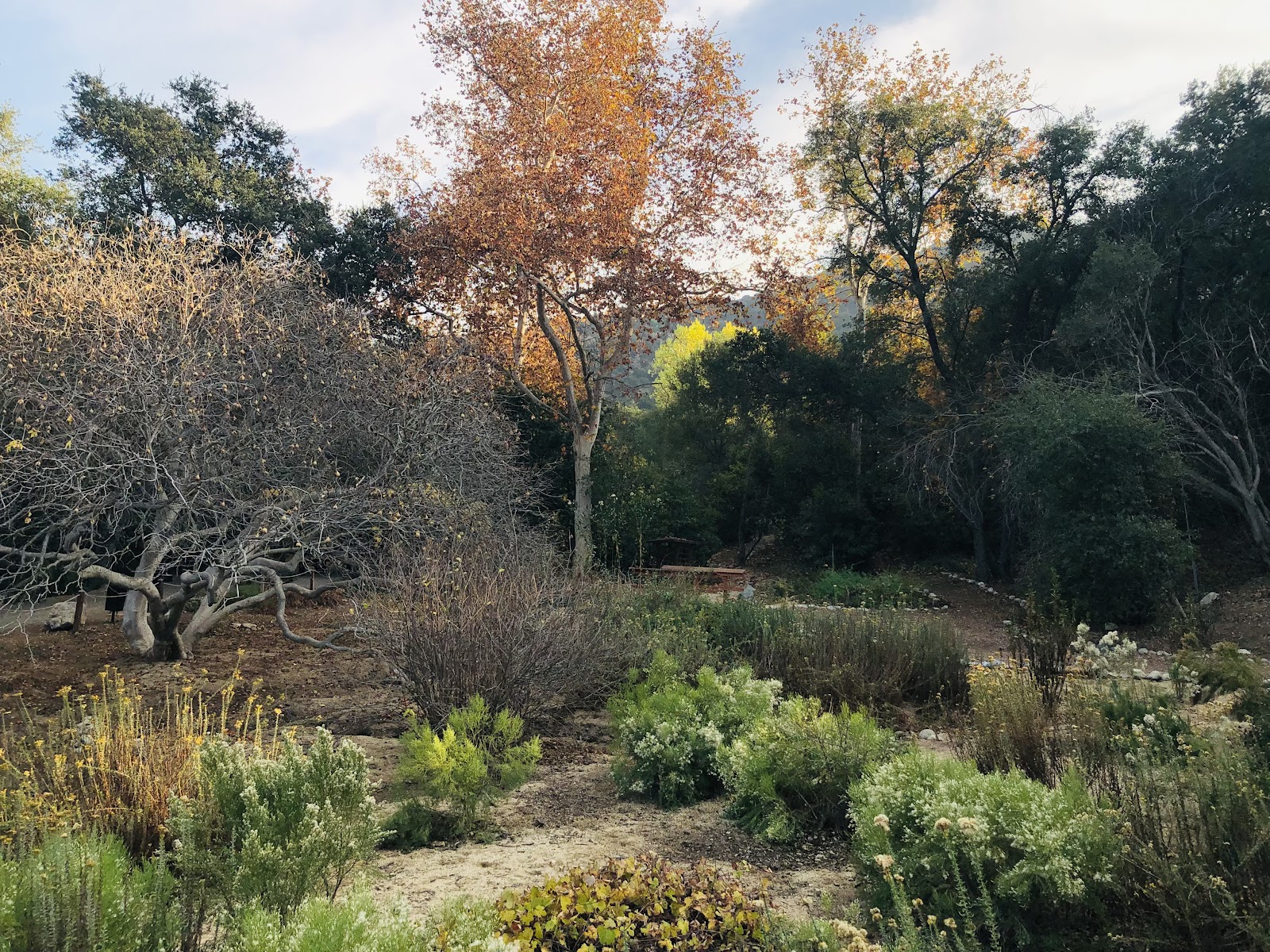Descanso Gardens was spared by the Eaton Fire, but it was hit hard by the 100 mph windstorm that fanned the flames. The staff had grim and grueling work this week to assess the damage and start cleaning it up. Especially beaten up were the deodar cedars, and the live oaks. Their crashing branches, in turn, took it out on our fences and power-lines.
Altadena, and Nuccio Bros. Nursery
One of the first priorities of the Horticulture department was to send teams out to fire-stricken Altadena, to Nuccio Brothers Nursery, to rescue as many camellias as we could carry. This landmark camellia and azalea nursery, family owned in Altadena for 90 years, and famous for developing many gorgeous varieties, has over the years played a prime role in building Descanso's camellia collection. The Eaton Fire raced right through Nuccios', destroying many buildings and systems, while miraculously sparing much of the plant stock. But now totally cut off from its water supply, the nursery is forced to go out of business. We loaded up about 100 camellias, sadly aware that all the plants we couldn't take, will soon die.
 |
| Nursery supervisor Frank Obregon led our Horticulture team to retrieve what we could on our last trip to Nuccios'. |
 |
| We were escorted by a firetruck past the police cordon and through the deserted city of Altadena. Descanso gardener Jenny Perez-Flores took these photos of the devastation. |
 |
| Altadena is - was? - one of the few remaining middle class, tightly knit, walkable/bikeable, affordable, vibrant, racially mixed communities in Southern California. |
Saving the Nuccios' camellias boosted our morale somewhat through this very trying week. But there was one other event that brought us some cheer and positivity. That was the arrival of eight koi fish, rescued by the Pasadena Humane Society from the backyard pond of a destroyed house in Altadena. We welcomed these new residents, photo-documented them, and released them into our Japanese Garden pond. Here we hope they will have a long, happy, and beautiful life.  |
| Horticulture Director David Bare and Display Gardener Shana Babbs greet the new arrivals. |
 |
| Gardeners Jenny Perez-Flores and Lili Stainbrook |
As of this writing, on the Martin Luther King, Jr. holiday, the fires are contained but still burning in the back country. Worryingly, Los Angeles weather forecasts are showing another bout of high-speed Santa Ana winds is headed our way this week and could bring more tree damage and even revive the fires. The disaster isn't over for Los Angeles.






















































